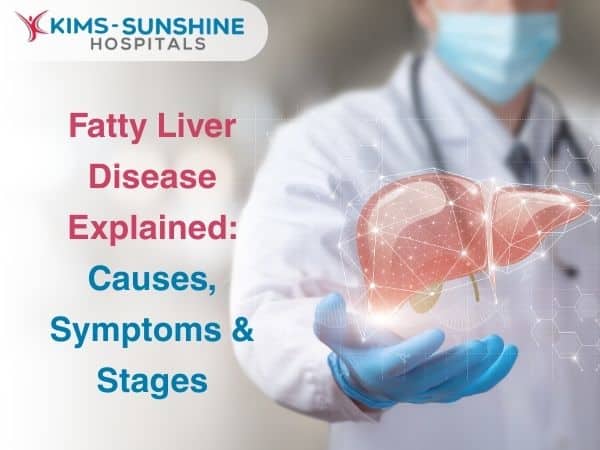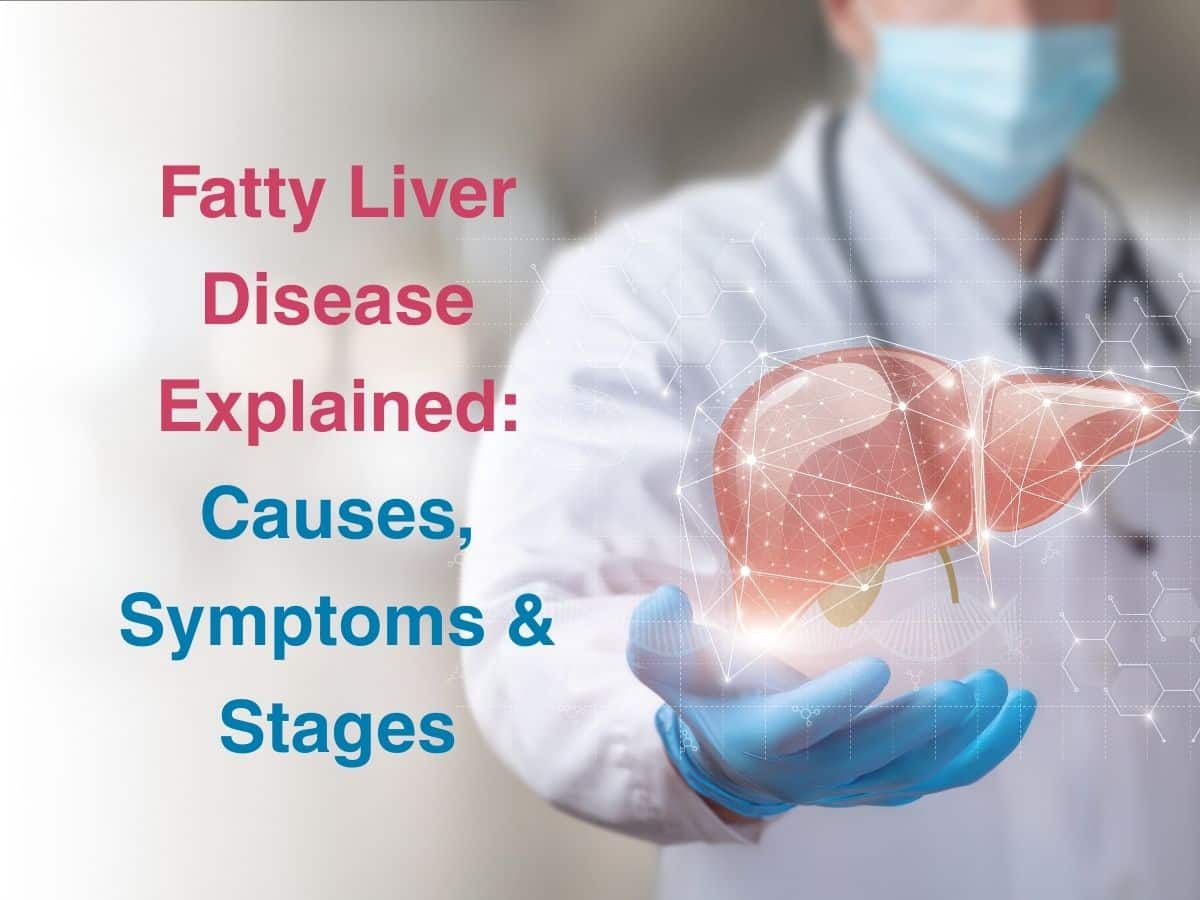
Fatty Liver Disease Explained: Causes, Symptoms & Stages
 Fatty liver disease affects almost 38% of the Indian population- which is an extremely high number. The liver is a crucial organ that is responsible for maintaining metabolism overall. It also tends to store fat reserves- about 5% of its weight is lipid in nature. But, if fat deposition is greater than 10%, then it is classified as fatty liver disease. There are various causes as to why this can occur. Recent research has shown that metabolic dysfunction alone can cause this issue and there is no need for exposure to alcohol at all, though fatty depositions are common if an individual is alcoholic. With this in mind, the classification of this disease has been changed significantly. In India, non-alcoholic fatty liver disease (NAFLD) is the number one cause for liver disease and subsequent problems associated with the condition.
Fatty liver disease affects almost 38% of the Indian population- which is an extremely high number. The liver is a crucial organ that is responsible for maintaining metabolism overall. It also tends to store fat reserves- about 5% of its weight is lipid in nature. But, if fat deposition is greater than 10%, then it is classified as fatty liver disease. There are various causes as to why this can occur. Recent research has shown that metabolic dysfunction alone can cause this issue and there is no need for exposure to alcohol at all, though fatty depositions are common if an individual is alcoholic. With this in mind, the classification of this disease has been changed significantly. In India, non-alcoholic fatty liver disease (NAFLD) is the number one cause for liver disease and subsequent problems associated with the condition.
Causes Of Fatty Liver Disease-
Generally speaking, a healthy liver has about 5% fat- which is normal and very much necessary for proper function but when you eat too much or don’t get enough exercise or have some genetic condition that does not allow your liver to work normally, then you may have higher amounts of fat deposition. Let us look at the various causes that can lead to fatty liver disease-
- If you have a pronounced paunch or belly- and are obese
- If you have any degree of insulin resistance or Type 2 Diabetes
- If you suffer from hypercholesterolemia
- If you are a habitual drinker
FLD during pregnancy is also seen at times.
Some people may also have FLD if their thyroid gland is not working normally, or if they have PCOS. It may also be an unwanted side effect of medications that may be taken to treat some other condition in the long term.
Symptoms Of Fatty Liver In Early Stage-
The problem with FLD is that symptoms are pretty subtle and not very easy to follow. Nevertheless, you should know when to go in for a complete check-up, if you are obese or have a risky disposition.
- If you experience sharp or dull pain in the right upper abdomen
- If you lose weight randomly
- If you feel exhausted and not well at all most of the time.
Symptoms get much more pronounced with advancing liver disease-
- You will notice bruising on the skin.
- Dark coloured urine.
- Jaundice
- You may vomit blood.
- You may have dark coloured stools.
- You may have very itchy skin.
Fatty Liver Disease Types (NAFLD & AFLD)-
NAFLD- Non-Alcoholic Fatty Liver Disease is a condition that causes steatosis or fatty liver due to obesity or if you have metabolic dysfunction- like diabetes or high cholesterol levels. This is the condition that affects trillions of Indians in the country.
Alcoholic Fatty Liver Disease (AFLD) is when you abuse alcohol and with continuous exposure, your liver gets damaged in the long term.
Fatty Liver Grade 1, 2, 3-
Fatty liver does not occur at once, but it progresses in stages. The grade is decided by how much fat gets deposited in the liver.
- Grade 1- when there is fat deposition in the liver, but you don’t notice any symptoms per se. This stage is reversible- if you begin to eat healthy and get exercise often. You will have FLD Grade 1 if fat deposition is less than 33% of the liver weight.
- Grade 2 is when you have moderate fatty liver disease and have about 34-66% of fat deposition in the liver. If lifestyle changes are not made and this condition is not diagnosed now, you risk suffering from cirrhosis or liver failure too.
- Grade 3 – the most severe form of FLD where over 66% of the liver is fat content alone. This can cause chronic inflammation, scarring or fibrosis and even cirrhosis. Treatment is necessary at this stage and if none is given, there is the risk of liver failure that can occur later on.
Conclusion
Diet and lifestyle for fatty liver are two of the main considerations- when having to deal with this condition. When you take good care of yourself, then you realise that fatty liver disease is very much preventable, in the majority of cases. The deposition of fat in the liver is never sudden and takes time for it to get worse. So, be smart about getting assessed annually and understand that a good metabolism is what will help you in the long run- not any short term fixes that you may think of immediately.
Frequently Asked Questions
What is fatty liver disease and its types?
How is fatty liver diagnosed?
What are the different stages of fatty liver?
There are four stages of fatty liver disease:
- Simple fatty liver (steatosis) – fat buildup without inflammation.
- Steatohepatitis – fat buildup with inflammation (called NASH in non-alcoholic cases).
- Fibrosis – persistent inflammation leads to scarring.
- Cirrhosis – severe scarring disrupts liver function and can be life-threatening.






